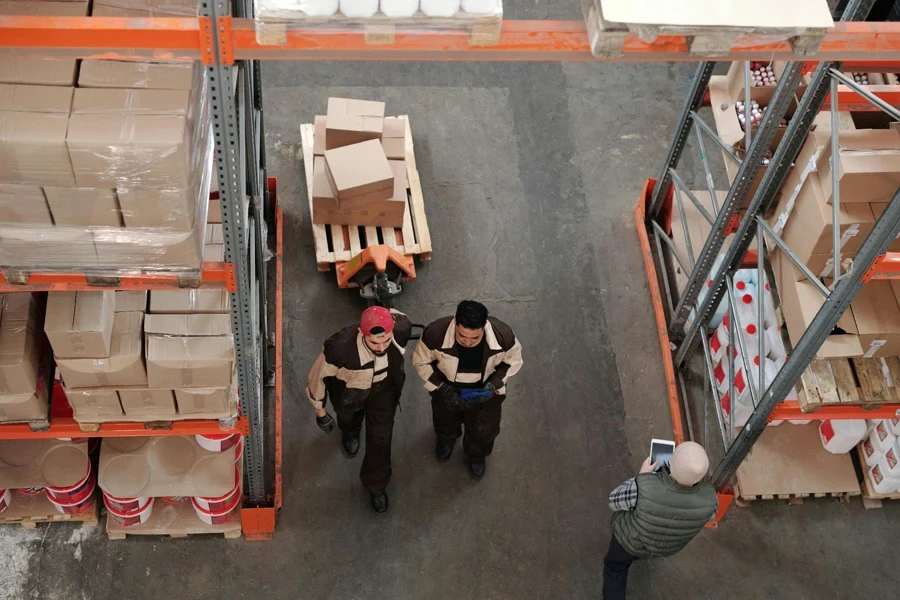Running a small e-commerce business? Fast and efficient order fulfillment is crucial. Alibaba offers great deals, but navigating their process can be tricky.
Here’s the scoop: Master Alibaba fulfillment and watch your business soar. We’re talking faster shipping, lower costs, and satisfied customers.
We’ll cover everything from choosing top-notch suppliers to nailing shipping and customer satisfaction, so you can streamline operations for your online store.
Table of Contents
Getting started with Alibaba fulfillment
Placing your first order
Shipping and delivery
Inventory management
Customs and import regulations
Quality control
Technology and tools
Summary
Getting started with Alibaba fulfillment
Here’s a quick rundown:
Sign up on their website with your business details and verify your email. Complete your profile; it builds trust. Next, explore the platform. Use the search bar, filter results, and check out the “Trade Assurance” and “Verified Supplier” features for secure deals.
Finding reliable suppliers is essential, and badges like “Gold” and “Verified Supplier” can provide helpful assurance during the sourcing process. Read buyer reviews, chat directly with suppliers, and use “Trade Assurance” to build trust with buyers.
Placing your first order

Chatting with suppliers is not as scary as it sounds. Just shoot them a message through Alibaba and ask away. Get the lowdown on their products, how long they’ll take to ship, and what options you’ve got for delivery.
Now, here’s where it gets fun—haggling! Don’t be afraid to talk numbers. Whether it’s price, how much you need to order, or how you’ll pay, most suppliers are up for a bit of back-and-forth.
When it comes to paying, Alibaba’s got your back. Credit card, bank transfer, PayPal—take your pick. And here’s a pro tip: use their “Trade Assurance” feature. It’s like a safety net for your cash until your order arrives.
Shipping and delivery

Alibaba gives you a few ways to get your products—air, sea, and express. Air shipping is fast but can cost more. Sea shipping is a freighter—slower but cheaper for large orders. Express is like a fancy delivery service (think DHL or FedEx)—perfect for urgent, smaller shipments.
The price tag isn’t just about how much your stuff weighs. The size of the box, how you’re shipping it, and where it’s going all play a part. Your supplier can give you an estimate, or you can use Alibaba’s handy shipping calculator. Customs fees and taxes can sneak in and surprise you, so factor those in too!
Once your order sets sail (or takes flight!), snag that tracking number from your supplier. It’s like a magic code that lets you follow your package’s journey. You can check its progress through the shipping company’s website or even Alibaba’s system.
Monitoring your shipment keeps you in the loop and lets you handle any problems that might pop up along the way.
Inventory management
Take a peek at your sales data—what’s selling out fast, and what’s just gathering dust? These insights help you figure out exactly how much stock you need. You don’t want to be stuck with a warehouse full of stuff nobody wants, but running out can seriously frustrate your customers.
Some seasons are like sales explosions—be prepared for those shopping sprees! Don’t get caught off guard with empty shelves when everyone’s on a buying spree. Now, keeping track of all that stock… Regular check-ins are your best friend. Think of it like playing inventory detective! Here are some extra tips:
If you’re selling things with an expiration date, use the oldest items first to avoid any unfortunate surprises. Doing a complete inventory count every so often is a good idea, too. It’s like making sure all your business ducks are in a row—everything should add up!
Customs and import regulations

Before you picture orders flying off your shelves, there’s a customs hurdle to jump. Depending on what you’re importing, how much it costs, and where it’s coming from, you may be required to pay some fees, such as taxes and duties. Think of it like a special customs price tag for international goodies.
Online calculators or customs brokers can help estimate these costs beforehand, so you’re not hit with any surprise fees later. It’s like having a cheat sheet to navigate the import world.
Next up, paperwork. This might not be the most exciting part, but it’s your VIP pass through customs. You’ll typically need stuff like invoices (those receipts that show what you paid), packing lists, shipping documents, and certificates that say where your awesome products came from.
Double-check with your supplier and local customs office to make sure you have everything on the list.
Quality control

Be super clear with your suppliers about what kind of quality you expect. We’re talking about the nitty-gritty—materials, size, how it should function, and the whole shebang. A checklist should suffice here, making sure everything lines up with your standards.
Before your products even hit the shipping truck, consider getting them inspected. You can hire someone to do this or ask your supplier for super-detailed photos and maybe even send some samples. This way, you catch any wonky stuff before it leaves the factory, saving you a whole lot of hassle.
Returns and exchanges? You need a plan for those, too. Make sure your customers know your policies (they should be clear and simple!) and work with your suppliers to handle any quality issues that might pop up. A smooth returns process keeps your customers happy and your brand reputation sparkling.
Technology and tools
Programs like ShipStation, Zoho Inventory, or ShipBob can act like inventory eyes, tracking your stock in real-time so you never run out of that item everyone wants.
They also have your back with an auto-reorder function, automatically placing new orders when you’re running low. You’ll have a stockroom assistant who’s always on the ball, giving detailed insights about your orders, like what’s selling well and what’s not moving.
Whether using Shopify, WooCommerce, or something else, you want everything to work together seamlessly. With the right online selling platform, inventory levels, order statuses, and shipping data should update automatically.
Summary
Running an online store is all about getting orders out quickly and keeping customers happy. Alibaba.com can be a great source of products, but it does take some know-how to use it well.
Once you get the hang of Alibaba.com, though, it can really boost your business.
You’ll likely see faster shipping times, save some money, and end up with happier customers. We’ve gone through the whole process—from finding reliable suppliers to getting products shipped and keeping customers satisfied.
The goal here is to make your Alibaba.com orders run smoothly. When you nail this, your online store will run better, and your customers will have a better experience.




